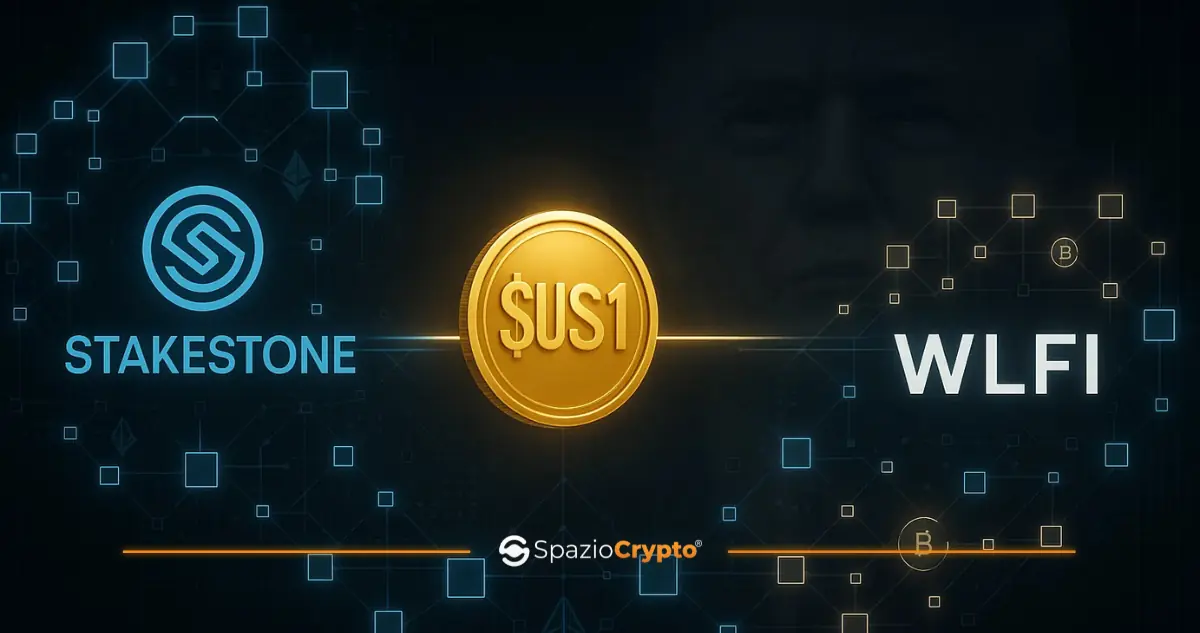
StakeStone and WLFI: Cross-Chain Liquidity for USD1
StakeStone is working with WLFI to improve the cross-chain liquidity of USD1, making it more accessible and faster in DeFi.

StakeStone is working with WLFI to improve the cross-chain liquidity of USD1, making it more accessible and faster in DeFi.

Get the latest news, learn from experts, discover new tools, and find inspiration right in your inbox.
No spam. Unsubscribe anytime.
A powerful documentary on how Bitcoin and blockchain are reshaping money, power, and geopolitics—from El Salvador’s Bitcoin experiment and Europe’s regulatory revolution to the rise of decentralized finance and the new global financial order.
StakeStone has partnered with World Liberty Financial (WLFI), a financial company affiliated with the Trump family, to offer cross-blockchain liquidity support for its USD1 stablecoin.
Through this collaboration, holders of USD1 will be able to transfer tokens between blockchains avoiding traditional bridging, wrapping or long waits.
Although the specific blockchains that enable this functionality have not been revealed, StakeStone boasts extensive integration capabilities, with connections already active on more than 20 blockchains and more than 100 DeFi protocols. The collaboration is particularly significant in terms of making USD1 more accessible in the decentralised finance (DeFi) environment.
WLFI had made headlines in January when it launched USD1, a stablecoin pegged to the dollar that stirred controversy and attracted media attention for its political associations. Nevertheless, USD1 quickly reached a market capitalisation of more than $2 billion.
Now, to strengthen its infrastructure and expand coverage, WLFI has turned to StakeStone to enable USD1 for cross-chain liquidity and make it more applicable to the real world.
StakeStone rose to prominence last year as a decentralised omnichain liquidity infrastructure protocol and liquid staking pool. It allows users to staking assets such as ETH and BTC while retaining the ability to use them in DeFi applications through interest-bearing tokens.
One of the key components of StakeStone is STONE, a token issued for ETH in staking that allows users to generate sustainable returns. The partnership announcement did not explicitly mention USD1 in relation to staking. However, the integration of StakeStone's infrastructure means greater flexibility for customers to use stablecoin on different chains. With StakeStone's current integrations, WLFI's USD1 can be spent in a smooth cross-chain environment without technical hurdles, which is normally complex.
Both projects aim for long-term growth
The total locked-in value (TVL) in StakeStone is about USD2 billion after just one month on the market, parallel to USD1's capitalisation. The two projects are poised for massive expansion together.
WLFI has access to sophisticated, native DeFi liquidity solutions, while StakeStone increases its impact with a high-end, fast-growing stablecoin. With continued expansion of usage, this partnership will mark a new era of innovation in the stablecoin and staking ecosystems.
Read Next
Tether USDT under scrutiny, but surplus shows no immediate risks
Arthur Hayes warns of potential risks for Tether, but data show record surpluses and solid reserves according to CoinShares.
China, Dollar Escape: Crypto Investors Abandon USDT for Real Assets
The strengthening yuan is eroding the value of the USDT in China, while regulatory tightening turns stablecoins into risky assets.
Stablecoin under siege: Israel and China's push for digital sovereignty
Israel accelerates on the digital shekel while China expands the digital yuan, putting pressure on the dominance of dollar-linked stablecoins.
S&P downgrades Tether: risk for USDT and Juventus
S&P downgraded Tether to the lowest risk level, raising doubts about USDT's stability and the impact on Juventus' shareholder base.